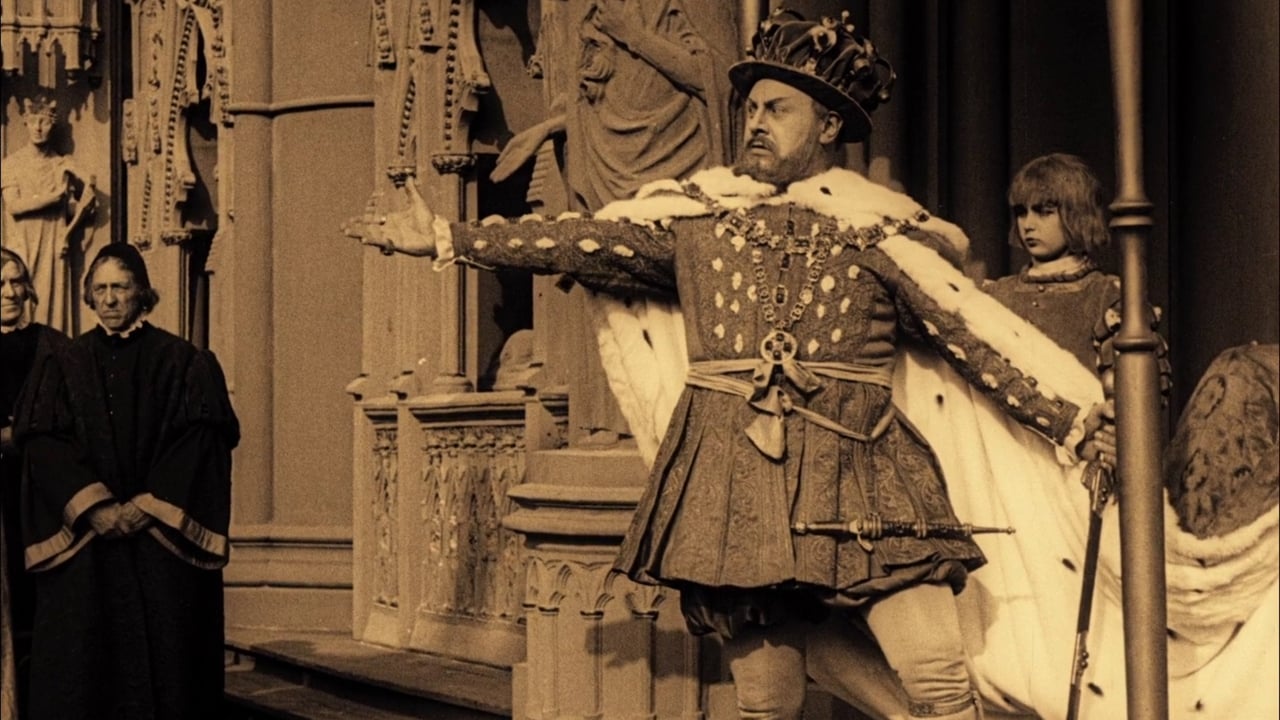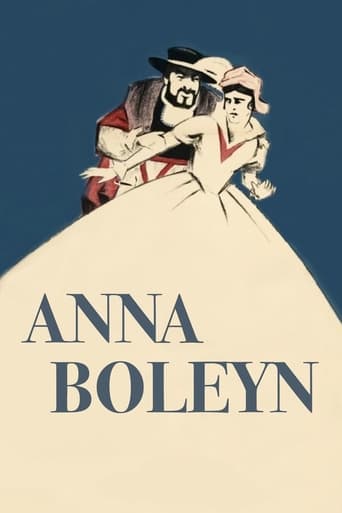GamerTab
That was an excellent one.
Libramedi
Intense, gripping, stylish and poignant
SparkMore
n my opinion it was a great movie with some interesting elements, even though having some plot holes and the ending probably was just too messy and crammed together, but still fun to watch and not your casual movie that is similar to all other ones.
Taraparain
Tells a fascinating and unsettling true story, and does so well, without pretending to have all the answers.
MissSimonetta
A filmmaker's early work can be fascinating, if not always among his or her best efforts. Lubitsch's signature touch may not have been fully developed by 1920, but he had still made charming romantic comedies like The Oyster Princess up to that point. However, one thing fans of his 1930s and 1940s work may not expect is that Lubitsch also made big historical epics during the silent era. The most famous might be The Loves of Pharaoh, starring Emil Jannings as a lecherous pharaoh who tears apart two young lovers. The film is beautifully produced, with lavish sets and costumes, crowds rushing through the frames. Unfortunately, the pace is leaden and the story is barely engaging.Lubitsch's treatment of the rise and fall of sixteenth century queen Anne Boleyn (here named "Anna") follows the same basic premise: Emil Janning's lusty Henry VIII separates young lovers Henry Norris and Anne Boleyn when he tires of his aging queen, Katherine of Aragon. Unfortunately, much of the same flaws of Pharaoh can be seen here as well: what we have is a lack of engagement or an interesting heroine.Lubitsch's Anne may be the most passive portrayal of the woman put to film and her characterization is probably the biggest reason why it's such a slog to get through. Anne Boleyn was known for being charismatic despite not fitting the blonde-haired, fair-skinned beauty standards of the day with her olive complexion and dark (possibly red) hair. So of course this Anne is fair skinned, blonde, and charisma-less. Anne always looks like she is on the verge of tears or fainting. She is repulsed by Henry from the start and never possesses any ambition to become queen. We see nothing of her social skills, her religious zeal, her bravery in the face of death. About the most you get of the historical Anne is her love for her daughter Elizabeth and occasional flashes of temper which in this movie seem to come out of nowhere.All the other characters are painted with broad strokes too: the mild Jane Seymour is suddenly a calculating temptress (?!), Henry Norris is the suffering lover boy, Mark Smeaton is basically a cackling frat boy out to get Anne when she won't sleep with him, the Duke of Norfolk is completely amoral and lacking humanity. About the closest we get to a bonafide performance is Emil Janning's Henry VIII, but even he is limited to leering, glowering, and guzzling beer from tankards.The script also lumbers from historical event to historical event, with things happening laughably fast. The divorce of Katherine of Aragon took years in real life, but here it's cleared up in all of five minutes! Yes, yes, this is entertainment, not a documentary-- but considering this movie is hardly entertaining, I'm going to pick at the rushed treatment of the story much more. But as I said before, it's not a total waste: the production looks great and Lubitsch sometimes uses creative framing and mise en scene to liven things up. But when it' all at the service of a dull script, it does not help make the viewing experience any better.What really kills me is that we're dealing with a fascinating piece of history and a fascinating woman. Making Anne Boleyn a saint is about as erroneous as making her a harpy (see the terrible, TERRIBLE Other Boleyn Girl for how Anne Boleyn's character gets assassinated these days). She was capable of kindness (she gave much to charities serving the poor) and cruelty (her treatment of her stepdaughter devolved once Mary refused to accept her as queen; she was known for boasting quite a temper). Few movies about AB have portrayed her as a woman: she is the seductress, the harpy, the suffering saint-- almost never a woman.Anyway, only Lubitsch or Jannings fans will get much out of Anna Boleyn (1920). If you want early Lubitsch, I highly recommend The Oyster Princess, a movie more suited to his style and talents.
Steffi_P
This is a strange piece: a tale of late-medieval English history, made at a German studio, entirely produced and acted by Germans (plus one Swiss and one Norwegian). While we in the UK are quite used to Hollywood rewriting our history for us (Braveheart etc.) we don't expect it so much from our fellow Europeans. But back in the early 1920s the UFA studio in Berlin really was the Hollywood of Europe, and for a few years they had the cinematic prowess to tell whatever stories they liked.The director here is Ernst Lubitsch, who later became well-known in the US for his sophisticated comedies, and back then he was primarily a comedy director too. Anna Boleyn sees him turning his many comical tricks to more dramatic effect. A favourite comedy technique of his was the pull-back-and-reveal, as used for example in the opening shot of The Oyster Princess (1919) to show the bloated Oyster King surrounded by his lackeys. That shot is duplicated here with the introduction to Henry VIII, the look slightly more realistic but just as revelatory of the character. And although Lubitsch's pictures are in a very different category to those of his fellow UFA luminaries Fritz Lang and FW Murnau, he shares with those directors a fascination with décor and architecture. He constantly composes shots in depth, looking down corridors or through into larger rooms, from the early moments at the harbour where a set of doors are opened onto a bustling street, to the haunting final view of the scaffold. This was a common way of emphasising a large space before the days of widescreen, but it also gives the whole thing a sense of dread and inevitability, as characters advance upon us from the distance or spy on each other into a room beyond.Lubitsch also reveals himself to be a master of pacing within a sequence. For example after a handful of busy shots at the spring festival the scene, everything becomes slow, simple and a shade darker as Anna encounters Norris on the outskirts of the merrymaking. Throughout the picture the director encourages steady, measured performances, making some scenes move at a glacial pace but endowing them with atmosphere and fascinating detail, such as the eerie depiction of Anna and Henry's wedding night. Playing the king, the talented Emil Jannings is uncharacteristically restrained, giving us a menacing, moody king very different to Charles Laughton's flamboyant 1933 portrayal. Henny Porten is not quite as good in the title role, her performance consisting mostly of looking extremely disturbed. However she is able to make a good account of herself in the final few minutes, when it really matters. An honourable mention must also go to Paul Biensfeldt as the jester, who makes the most of his close-ups and gives us a sincere and dignified portrayal of this deceptively simple character.Anna Boleyn is all in all a rather stunning feature, and actually somewhat better than most of the historical dramas coming out of Hollywood at the time. It seems that, during this crucial period when the full-length motion picture was beginning to grow up and things like screen acting and set design were becoming serious professions, the Germans had the edge with their strong theatrical, operatic and artistic traditions, upon which their cinematic industry was built. Lubitsch, Jannings, and almost every other member of the crew and cast had a background on the stage, as oppose to the technicians and entrepreneurs who were running Hollywood. In Germany they knew very well how to tell stories visually, how to merge production design and performance into a complete form of expression, and they had a large pool of people with the necessary experience. The supremacy of UFA would continue until the Americans gained the technological edge in the late 20s (not to mention poaching much of Germany's creative talent), but during this short period it was the most competent movie-making factory in the world. Anna Boleyn is not even the finest output of its time and place, and yet is still made with that powerful blend of storytelling knowledge and cinematic inventiveness, and is a drama of considerable stature and elegance.
MartinHafer
This movie earns a 7--because, for its time, it was a heck of a movie. The sets and costumes (mostly which were from the proper period--though some, to the trained eye, were not) are quite impressive. It's obvious that director Ernst Lubitsch was given a huge budget to create this film--and it's better looking than the Hollywood productions of the same period. In fact, today few would realize that the some of the most incredibly complex and expensive productions of this time were German--not American. It was only in the mid to late 1920s that the American films became the best-known and best made. You just can't find a film from 1920 or so that looks better.Unfortunately, looks alone do NOT make a great film. For someone who wants the truth behind the second marriage of Henry VIII, this is NOT a great film--as many of the facts were clearly wrong. Despite what the movie shows, Anne was Henry's mistress for some time before he got around to marrying her AND the process by which the English separated from the authority of the Pope was NOT the quick process you see in the film--it took years. As a history teacher, this film isn't terrible historically--but it still should have been a lot better. And, if you are going to play fast and loose with the facts, then why not at least make the film more interesting? Overall, the film lumbers during its two hour air time and more recent films (NOT "The Other Bolyne Girl"--which was also a mess historically-speaking) such as "Anne of the Thousand Days" and "The Six Wives of Henry the Eighth" are more accurate and interesting.Decent but far from as good as it could have been its sumptuous treatment. Plus, while a Lubitsch film, there's little trace of his famed "Lubitsch touch" here in this pretty but rather dull film.
movingpicturegal
Silent historical drama based on the story of Anne Boleyn, newly arrived lady-in-waiting to the Queen who catches the lustful eye of Henry VIII, bad-tempered King of England who loves to feast, drink, hunt, be entertained by his court jester, watch jousts, and chase around after young beauties who jump out of cakes and assorted attractive females around the castle. Well, he's soon annulled his marriage, married Anne, and telling her it is her holy duty to produce a male heir. She fails on that score and he soon has his eye on yet another lady-in-waiting. Meanwhile, Anne spends pretty much the entire film looking hesitant, perturbed, or downright ready to burst into tears. She just doesn't come across as a happy camper (or is it just bad acting?!).This film is a solid piece of entertainment, with an absorbing story that held my interest for two hours - plus I enjoyed seeing the very lavish medieval costuming featured here on a gorgeous sepia tinted print. Emil Jannings is quite striking and memorable in his well-done portrayal of King Henry the Eighth - he really seemed like he WAS Henry the Eighth. I am not so sure about the performance given by the actress who plays Anne, seemed a bit over the top. The DVD of this film features an appropriate, nicely done piano score that perfectly suits this story. Quite a good film.

